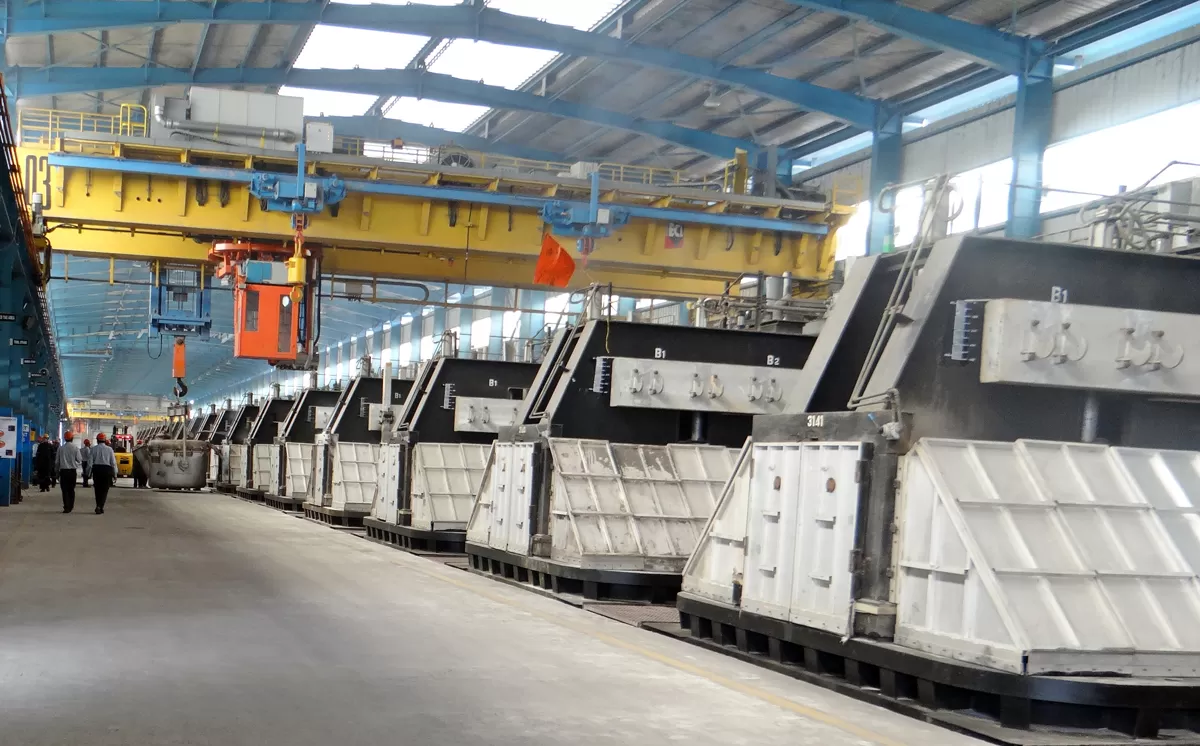With rapid urbanisation, tackling of municipal solid waste, especially in metros, has hit a roadblock, with landfill areas no longer available. The situation is no different world over, yet the problem gets solved, as ULHAS PARLIKAR explains.In our August edition, in the ‘Material Advantage’ column titled “Waste to Resource to Wealth”, we addressed how although the domestic cement industry has made significant strides in terms of enhancing energy efficiency and optimising productivity, the use of alternative fuels and raw materials is still a major area that can be developed. In this edition, we explore the potential of the Indian cement industry in ensuring sustainable management of municipal solid waste (MSW).The current level of MSW generation in the country is about 70 million tonne per annum (tpa). The sustainable management of MSW demands that each constituent present in it is gainfully utilised and the same is achievable through proper segregation processes in place. This workable approach that provides landfill-free towns and cities is depicted in Fig 1.The towns of Madukkarai in Tamil Nadu, Vengurla in Maharashtra and Ambukapur in Chhattisgarh, among others, are proven examples of this concept of sustainable management of MSW in which each fraction of the segregated fraction of MSW gets gainfully utilised and there is no dump yard or landfill in the process.The Solid Waste Management (SWM) Rules 2016 have included the following provisions to achieve the desired level of segregation.a) Segregation of dry, wet and domestic hazardous waste at source.b) Door-to-door collection.c) Setting up material recovery factory (MRF) facilities to achieve the following:Segregation of compostable material for sending it to composting facility or converting it into biogas.Segregation of recyclables, such as metals, plastics and glass, for sending it to recycling facilities. Segregation of inert materials to send it for filling in low-lying areas or embankments. Segregating non-recyclable combustible material called segregated combustible fraction (SCF) and sending it for use in the following applications: - Co-processing in cement kilns as alternative fuels and raw materials. - Replacement of fossil fuel used by power plants or other applications that utilise fossil fuel in their operations. - Sending it to waste-to-energy (WTE) plants for generating electricity. Municipal corporations of different towns and cities are moving towards implementing the above provisions in the rules appropriately. In the sustainable management approach defined in Fig 1, the real challenge is with the management of SCF. This SCF is a mix of multilayer packaging (MLP) material, thin and single use plastics, rexin pieces, tyre and tube pieces, rubber pieces, thermocol, old or damaged shoes, chappals, old and torn clothes, contaminated paper, etc. As there are no takers for this material in the marketplace, the same needs to be used for electricity generation in a WTE plant or sent to a cement kiln or power plant for co-processing. Options of WTE and power plantsThe option of WTE for this SCF fraction is difficult to implement in most towns and cities because the minimum implementable size of the WTE plant is 300 tpd (tonne per day) and the cost of such a WTE plant is about `1 billion. To generate 300 tpd of SCF, the population of the town has to be over 50 lakh, SCF content in MSW should be around 15 per cent and MSW generation rate 0.4 kg per capita per day. Barring a few metro cities, none of the towns and cities can meet these criteria. Therefore, the option of WTE is difficult to implement unless the SCF is pooled from different adjacently located towns. The utilisation of SCF in power plants is not yet getting implemented with concerns owing to the presence of >0.5 per cent chlorine. These concerns are on account of the likelihood of dioxins or furans and hydrogen chloride in the stack gases. Thus, there is a need for some co-processing trials to be carried out in some power plants in India to work out an appropriate protocol. Capability of the cement industryThe best option, therefore, is cement kiln co-processing. This is substantially workable on account of the following features:The cement plant is already in existence.Most cement plants have a co-processing facility already set up on their kiln system. Hence, these plants are ready to utilise the refuse-derived fuel (RDF) meeting their acceptability criteria. From the 70 million tpa of MSW, appropriately 10 Mio tpa of SCF can be generated. This can be suitably converted into cement-grade RDF and sustainably utilised in the cement kiln as alternative fuel and raw material through co-processing. Current clinker production is at about 250 million tpa; the TSR achievable by the industry with this RDF would range between 12 per cent and 15 per cent, which is easily feasible without getting into concerns of chlorine saturation. Acceptable RDF grade to cement industry An expert committee constituted by MoHUA has proposed three grades of RDF for use in the cement industry. Grade 1 and Grade 2 can be utilised by cement industry as such and Grade 3 can be used by it after blending it with some other AFR materials. These RDF grades can be manufactured from the non-recyclable SCF thatgets generated from MSW. The manufacture of these RDF grades can be done after setting up the required facility. This includes facilities for quality assessment, blending, shredding, bailing, storage, etc. It is desired that RDF producers interact with cement plants to produce material with the desired quality and enter into a suitable long term techno-commercial agreement with them. This facility can be set up near an SCF generation site or at the cement plant. It can be set up and operated by a third-party waste processor or by the cement plant.Win-win considerations in the sustainable management of SCFTo ensure a successful business model, it is important to have a win-win consideration for each stakeholder. There are three stakeholders in the process: Municipal corporations, waste processors and cement plants. Fig 2 provides the costs and benefits for each of these stakeholders. The following win-win considerations should be noted from Fig 2:a) Cement plant: The price of RDF should be reasonably lower than the cost of coal after accounting for higher fuel consumption and production loss. b) Waste processor: Sum of the (i) tipping fee earned from the municipal corporation and (ii) RDF price received from cement plant should be reasonably more than the sum of (i) processing cost of converting SCF to RDF, (ii) transportation cost of SCF from municipal corporation to its facility and (iii) transportation cost of RDF from its facility to cement plant.c) Municipal corporation: The SCF should get sustainably managed without the need to build a dump yard or landfill for the same. Further, the proportionate portion of the taxes collected for management of MSW should be more than or equal to the tipping fee paid to the waste processor for the sustainable management of SCF. Challenges and feasible solutions Major challenges in implementing this sustainable solution include:A justifiable consideration of the administration towards this solution. Currently, the major consideration of the administration revolves around the WTE solution, which is unlikely to be implemented owing to the techno-commercial constraints mentioned above. The co-processing solution is more attractive from both technical and commercial considerations.The cost involved in setting up RDF processing facilities and extending relevant fiscal policies towards this solution. The Central Government and state governments extend grants to set up projects for management of MSW. It is desired that these grants be extended to setting up facilities for production of cement-grade RDF.The cost of transportation of SCF from the municipal corporation to the waste processor and the cost of RDF from the waste processor to the cement plant. Considering that the overall SCF generation in the country will be about 10 million tpa and the average transportation cost of transporting SCF from the municipal corporation to the SCF processing facility is Rs.400 per tonne, the overall cost of transportation works out to Rs.4 billion per year. Considering that the RDF produced from SCF will be 7 million tpa and the average cost of transportation of RDF from the processing facility to the cement plant is `1,500 per tonne, the total transportation cost works out to Rs.10.50 billion. Hence, put together, the amount works out to Rs.14.50 billion. This figure of Rs.14.50 billion per year is for the management of the entire non-recyclable combustible fraction getting generated in the country and avoids dumpyards and landfill implementation countrywide. Recommendations Therefore, it is suggested that the following actions be taken up by the government to solve the problem of SCF waste management and dump-yard creation faced in the country. 1. Formulate a RDF mission to directly coordinate the required actions through municipal corporations, MSW management companies, RDF manufacturing companies and cement plants. 2. Extend the existing fiscal benefits of MSW projects to RDF production projects. 3. Encourage use of RDF in cement kilns through feasible fiscal policies.4. Encourage the establishment of RDF facilities across towns and cities in India by including them in the tendering process.5. Establish a mechanism to deal with the transportation cost management of SCF and RDF as elaborated above through an appropriate central and state-level budgeting process. ConclusionThe current status of RDF usage is the same as that of fly-ash usage in cement manufacture in the 1990s. The cement industry has become mature over the past decades and is now utilising about 50 million tpa of fly-ash. This is because of the win-win policy that the fly-ash mission had promoted in initial days. It is clear from the fly-ash example that if RDF is seen as an accessible and acceptable material from the techno-commercial angle, the entire cement industry would implement the required facilities at its plant and undertake co-processing of RDF to its maximum levels. This RDF use in cement plants will facilitate the following:1. Reduction in landfilling or dump-yard space.2. Reduced GHG emissions.3. Eliminating dump yards and associated environmental issues.4. Conservation of a reasonable quantum of fossil resources such as coal, limestone, iron ore, bauxite and silica that are currently utilised in cement manufacture.About the author: Ulhas Parlikar, Global Consultant (Strategies for Waste Management, Circular Economy, Policy Advocacy, AFRs & Co-processing), retired as the director of Geocycle Business and Dy Head of Geocycle India. With a work experience of over 36 years, he has worked with Hindustan Lever, National Peroxide and ACC. Along with building a large Geocycle Business in ACC he has spearheaded co-processing initiative in the country and established it as a business model.

















